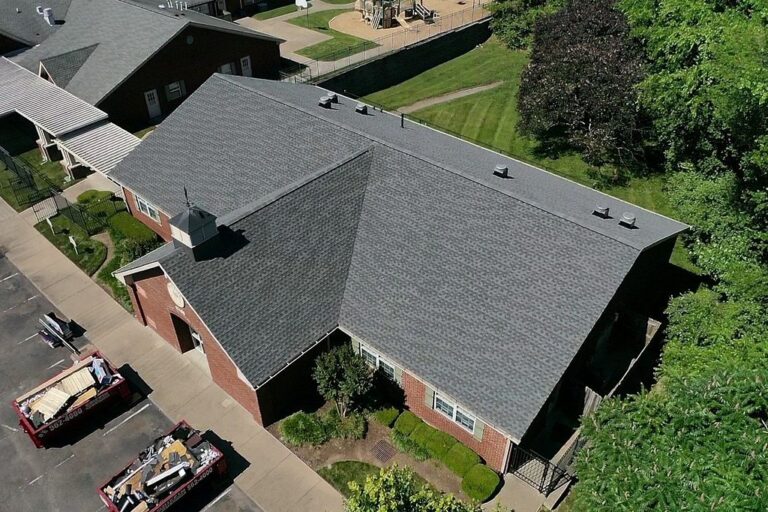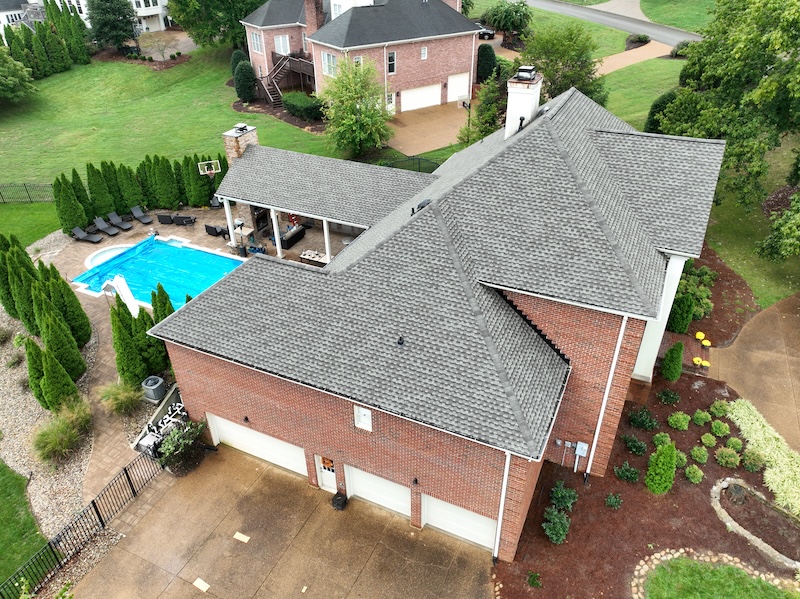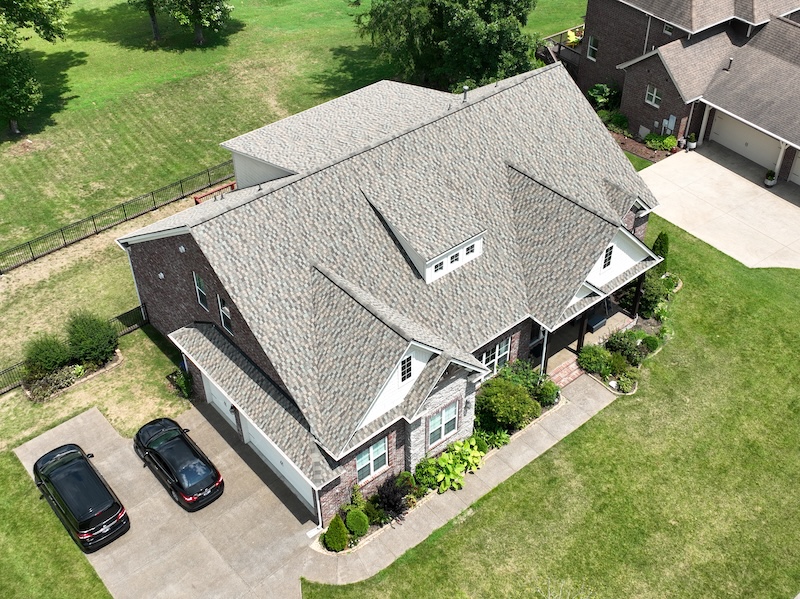How to Check for Roof Damage After a Storm
Storms can do more damage than you think, and not all of it is easy to see. Missing shingles, bent flashing, or even small leaks can turn into big problems fast.
That’s why it’s important to know how to check for roof damage after a storm.
A quick look around your home right after the weather clears can help you catch issues early, save money on repairs, and keep your roof in good shape.
In this guide, we’ll walk you through the signs to look for, when to worry, and what steps to take if your roof needs help.
How to Tell if There Is Roof Damage?
After a storm, some signs of roof damage are easy to spot, while others hide until it’s too late.
Inside your home, look for new water stains on the ceiling, damp spots in the attic, or strange drafts that weren’t there before. These changes often point to leaks or cracks letting water or air through.
Even if the roof looks fine from the outside, hidden damage may already be spreading beneath the surface. Wind can lift shingles just enough to break their seal, and water can sneak under without leaving a trace at first.
That’s why checking both inside and out is so important.
What Does Wind Damage Look Like on a Roof?
Wind damage comes in many forms, and it doesn’t always leave a gaping hole behind.
One of the most common signs is lifted or curling shingles. These may still be attached but no longer sealed, which makes them weak against the next storm. You might also spot missing shingles, especially around the edges of the roof or near the ridge line.
Look for metal flashing that’s been bent or torn away, especially around chimneys and vents. Ridge caps can also suffer wind uplift, creating small gaps that lead to leaks. In more severe cases, you may see fallen branches, dents, or even pieces of roofing material scattered in your yard. Subtle wind damage can weaken your roof over time, even if nothing seems broken today.
How Do You Visually Inspect a Roof?
You don’t need to climb up on the roof to check it. Start by walking around your home and scanning the roof from the ground. Use binoculars if you have them to get a closer look at shingles, flashing, and vents. Check your gutters and downspouts for bits of shingle granules. This could mean your roof is wearing down.
Walk around the outside edges and look up at the eaves, soffits, and fascia boards. Water damage or mold around these areas might point to roof leaks.
If you’re unsure or the roof is too steep or high, consider a drone inspection or call a roofing professional. It’s not worth risking a fall!
7 Ways to Check for Roof Damage After a Storm
Here’s a simple checklist to help you spot damage early:
- Look for missing or broken shingles. These are clear signs of wind or impact damage.
- Check for dents in vents, flashing, and gutters. Hail and debris can leave marks that let in water.
- Spot loose or shifted flashing. Even small gaps can let moisture seep in over time.
- Inspect the attic for water stains or leaks. This can reveal issues you can’t see from the outside.
- Check ceilings and walls for new discoloration. These could be early signs of water intrusion.
- Examine your yard for fallen branches or roofing debris. Storms often leave behind clues.
- Look for sagging areas or dips on the roof. These may signal structural problems needing quick attention.
Following this list right after a storm can help you catch damage before it gets worse. And if anything feels off, it’s smart to bring in a pro for a closer look.
When Should I Worry About My Roof?
Some damage can wait a few days. Other issues need attention right away. If you notice active leaking, wet spots growing quickly, or visible structural sagging, it’s time to take action. These problems can lead to mold, insulation damage, or even roof collapse if left too long.
Even small problems (like one lifted shingle or a bit of missing flashing) can cause major issues if another storm rolls in. If you’re unsure how serious the damage is, don’t guess.
Call a roofing expert like Bluebird Roofing for an inspection. It’s better to be safe than deal with a costly repair later.
How Do I Know When My Roof Needs Replacing?
If your roof is over 20 years old and starts showing damage in several places, repairs might not hold up for long. Signs like sagging, bald patches where granules are missing, or repeated leaks across different rooms could mean the roof has reached the end of its life.
You should also consider how often you’ve had to patch it up. If you’re calling for repairs every few months, replacement might be the smarter, more cost-effective move. A new roof offers better protection and peace of mind, especially in areas with heavy weather.
How Do You Protect a Damaged Roof?
If your roof is damaged and more rain is in the forecast, it’s important to act fast. Cover any exposed areas with a heavy-duty tarp to keep water out. If you see a small leak, you can temporarily seal it with roofing tape or patch kits from the hardware store.
Just make sure you’re doing this safely, and stay on the ground or call a professional if climbing is risky.
You should also clear away branches or debris that might add pressure or cause more damage. And don’t forget to take photos. Pictures of the damage can help with insurance claims and make it easier for your roofer to plan repairs.
Schedule a Free Roof Evaluation With Bluebird Roofing
Storms don’t wait, and neither should you.
If you think your roof may have taken a hit, schedule a complimentary evaluation with Bluebird Roofing today. Our team uses in-person and drone inspections to give you a clear picture of your roof’s condition, with honest recommendations and no pressure.
We’ve helped thousands of homeowners across Middle Tennessee protect what matters most. Whether you need a simple fix or a full replacement, you can trust us to deliver quality, speed, and care from start to finish.
Protect your home the right way. Contact Bluebird Roofing now to book your free roof checkup.




